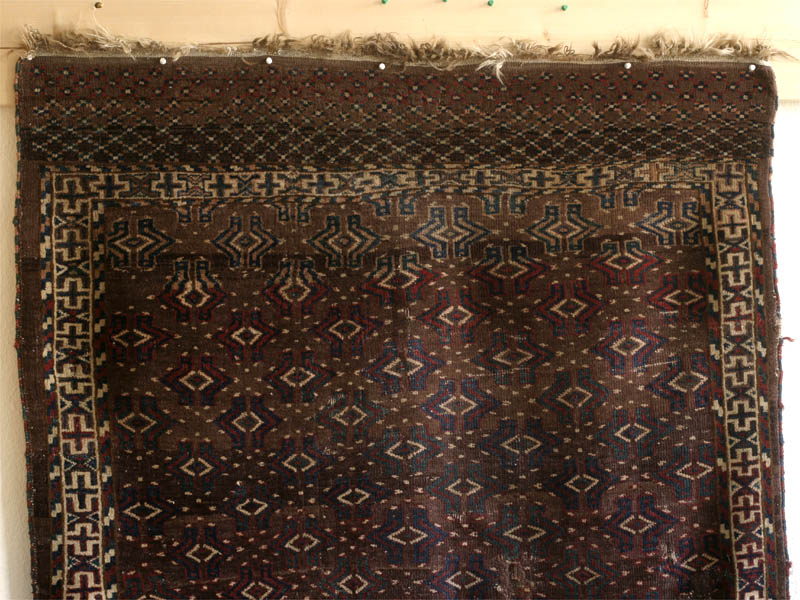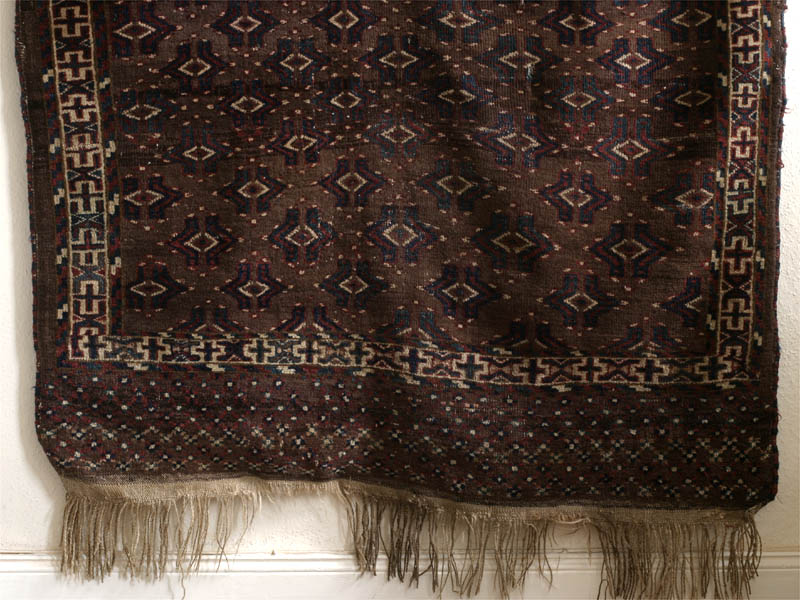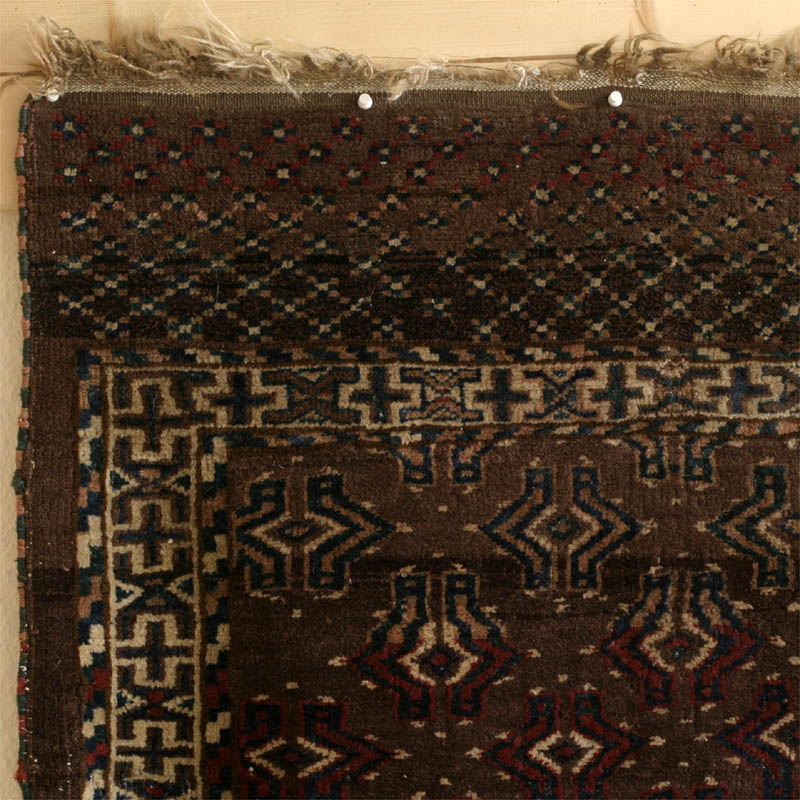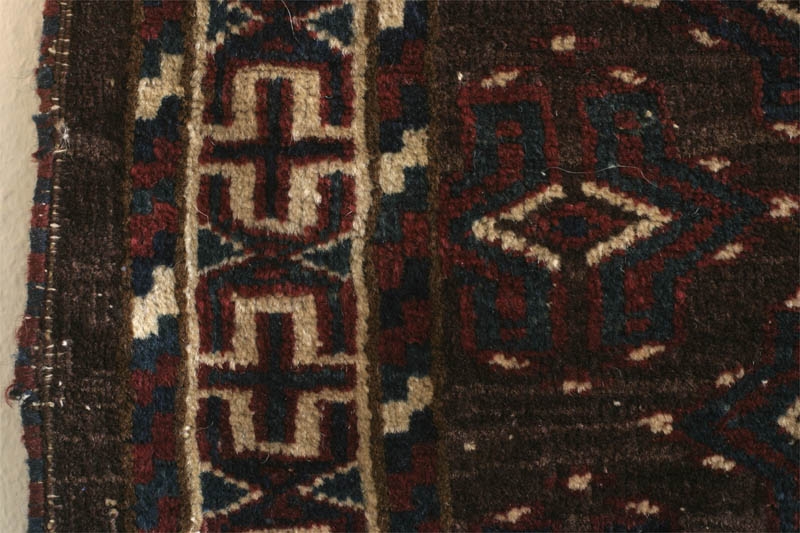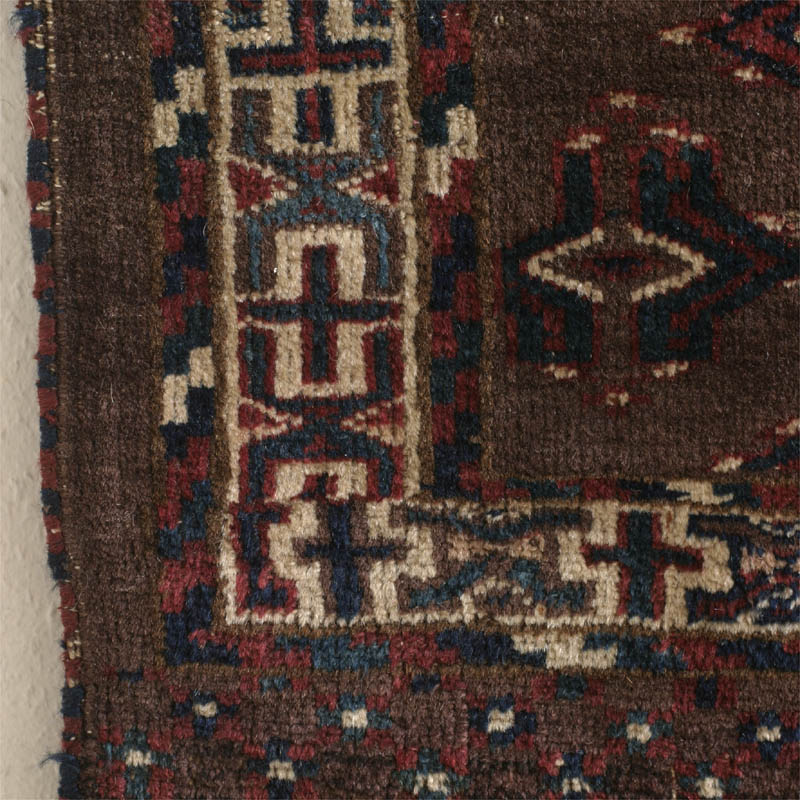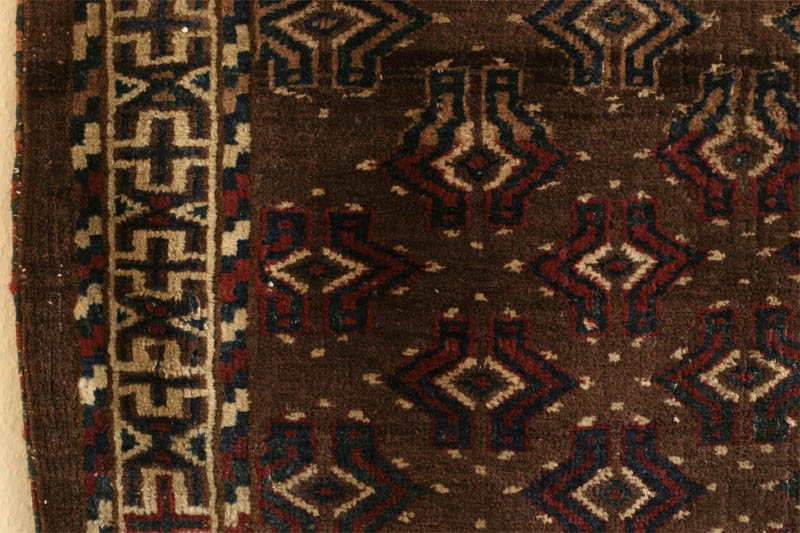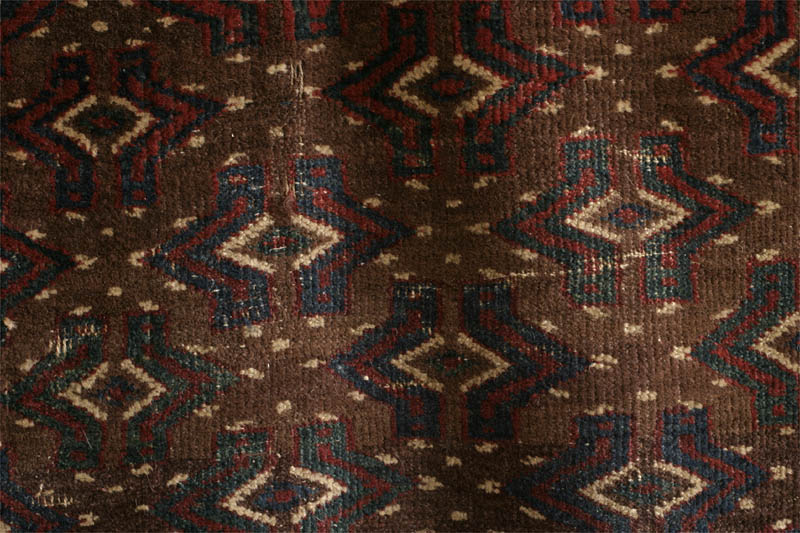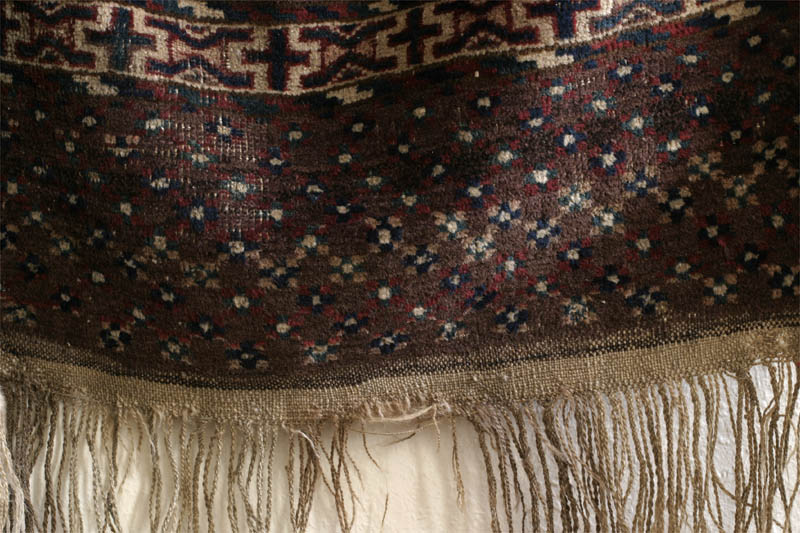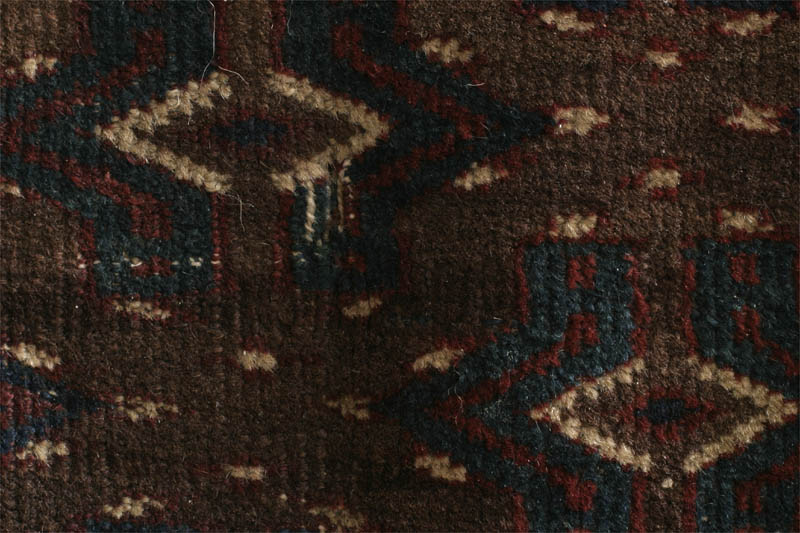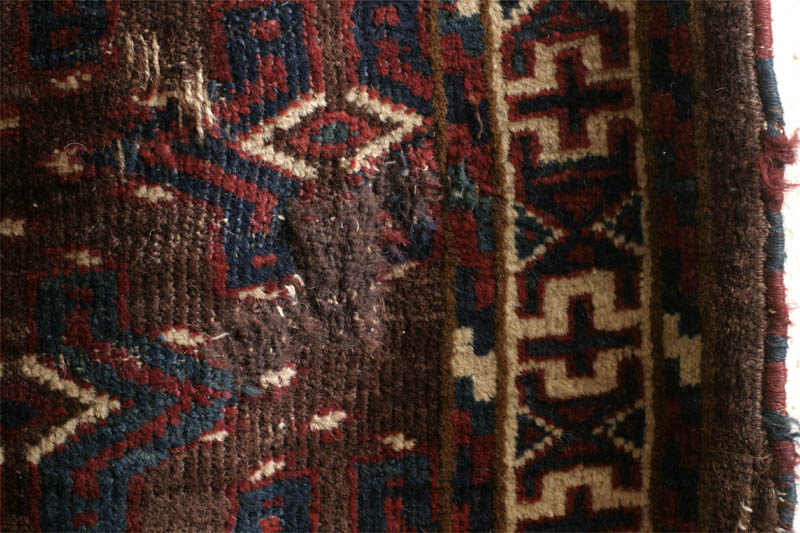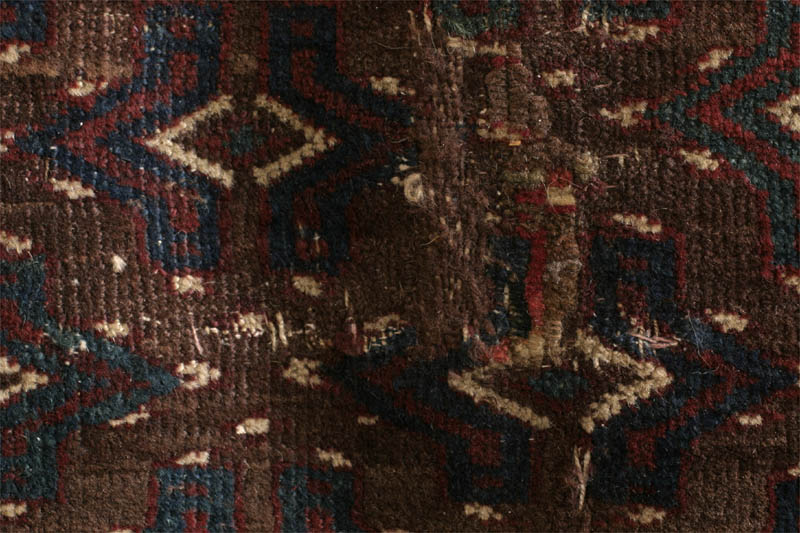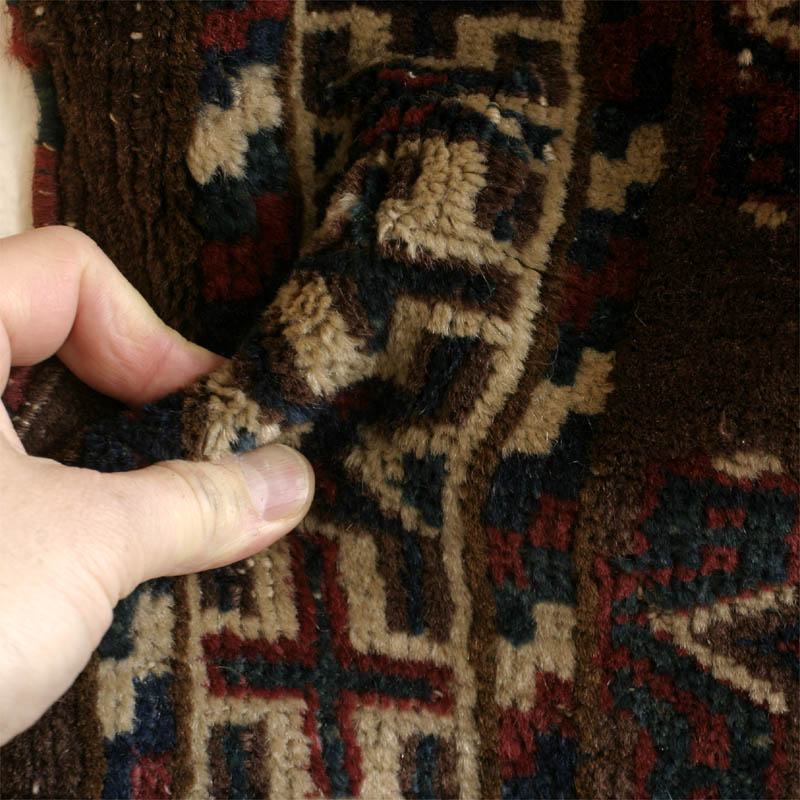Turkmenistan late 19th century. Slight wear, small holes, patch.
The diagonally repeating field shows a very simple gul with no secondary guls. I have not been able to identify similar ones in the books I have or via web sites. The gul's compressed central diamond shape with heavily outlined framing motives that follow the shape of the diamond and then symmetrically extend vertically upwards and downwards to form a kind of chimney could be a very much simplified and modified version of the dyrnak gul, without the row of hooks.
White dots outlined in red extend from the corners of the framing motives. Together with two free-standing dots on the central axis above and below, they seem to integrate the loose assembly forming the gul. The overall appearance on the field has something open, ordered and casual, not least through the irregularities of gul shape near the top if the field and the colour change of the framing motive from deep red to a muted rose-brown.
At both ends, pretty 7 1/2 inch wide pile skirts show a diagonal grid of stepped lines. Through another colour change in the lines, the grid seem to open up and transfigure into a field of stars in the upper half of both skirts.
The simple and narrow white-ground main border flanked by identical stepped stripe borders seems to echo the gul shape in the field, through the pointed diamond halves extending from the sides and the frame motives wrapping around them, which now seem to meet in the centre. More obvious are the negative forms defined by these motives: simple crosses wich appear outlined and emphasised by the white ground colour. Both field and border design show many pleasing irregularities which, together with the coarseness of the design, may indicate that this rug was woven for use by the tribal people who made it, not for trade or dowry purposes. Perhaps it was a beginner's trug (a girl learning to weave) or just executed in a rather casual and carefree way.
The size of the rug is 6ft. x 4ft.1in. (183cm x 125cm). The shape is slightly irregular but it lies flat on the floor. Asymmetric knots open to the right, no warp depression, 6 knots horizontal x10 knots vertical, ca. 60 kpsi. S-plied double twisted warps of thick light-brown wool and two bands of medium-brown wool, wefts (two shots) mainly thin white cotton (single strand, lightly twisted) with some brown wool mixed in; brown wool only has been used in the top quarter or so.
The selvages consist of one thick z-plied cord made from six warp threads, wrapped in alternating bands of red and blue-green wool.
The bottom end has a 1 1/2 inch kilim, a brown and an off-white stripe, both wool wefts, those in the off-white stripe seem to use the same material as used for the warps. Some kilim and fringe loss over about 10 inches width. The bottom fringe consists of twisted warp loops, ca 10 inches long (not all remaining, some torn off, others unravelled).
The top end has about 1 inch kilim, also a brown and an off-white stripe, the white stripe with white cotton wefts. The top fringe has knots of variously 3-6 warps with just an inch of open fringe beyond that, most knots remaining, some torn, some unravelled and shortened.
The pile is dense and medium short (ca. 6 mm, lower in some areas, (see section Condition), the wool is beautiful, soft, glossy, lanolin-rich. The rug's handle is flexible, floppy and very meaty at the same time. While some rugs seem 'all back', this one feels like 'all pile'. The relative lightness of the wefts may have given rise to the isolated areas of damage (see section Condition). So while this rug is structurally sound with mostly very good pile, I would not put chairs on it or use it in heavy traffic areas.
The palette is limited but pretty. The dyes are all natural. The field consists of heavily abrashed darker and lighter bands of a pleasing purplish maroon or oxblood red-brown. I guess this is madder-based (old roots, which are said to give a purple-brown tone), but perhaps also brown wool overdyed with madder. Besides ivory wool used in the diamonds, the dot accents and the borders, there are a saturated read (sometimes replaced by a muted rose-brown), a medium-dark indigo and a beautiful saturated blue-green.
The overall condition is quite good, mostly with full and lustrous pile showing light wear. However, there are two old repairs where weft wear areas with consequent pile loss have been closed simply through darning around the still existant strong warps. Darning is the traditional way of repairing utility textiles in the countries of origin, and I personally I think such old repairs somehow add to the character and history of a rug. The colour match is quite good and the darning patches do not stick out too much. Besides these most obvious repairs there a few smaller not vry noticeable blemishes (see images) and some areas in the field where the pile is lower, with some warp spots showing. The kilims and fringes show some loss (see images), the selvages look original and are in a good state apart from two inches near the top right which need re-casting.
